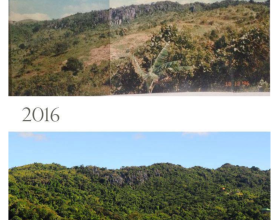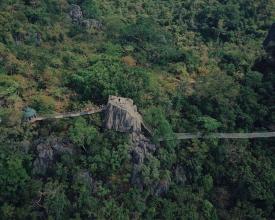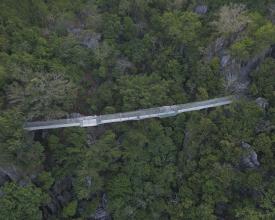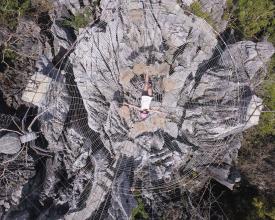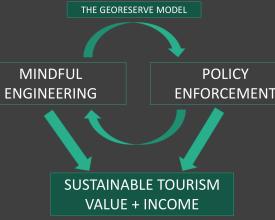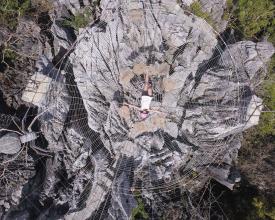
Le modèle de la géoréserve : L'ingénierie consciente comme moyen de créer une valeur et des revenus touristiques durables dans les zones de conservation
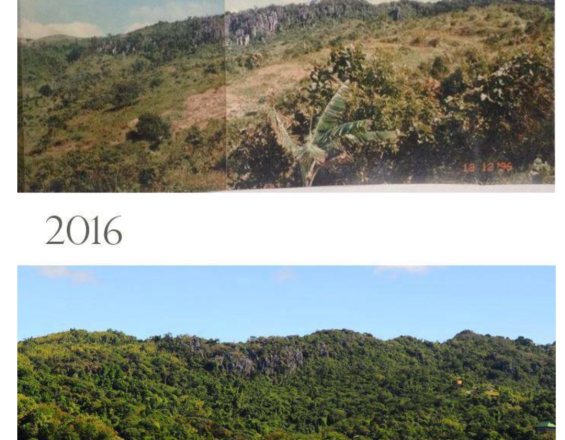
Le modèle de géoréserve est une innovation de marque déposée démontrée dans la zone de conservation de la géoréserve de Masungi à Baras, Rizal, Philippines. Il a été prouvé qu'il permettait de générer des revenus durables pour la gestion de la zone de conservation locale de 430 hectares grâce à un tourisme innovant et à l'ingénierie.
Inspirée du modèle des géoparcs de l'UNESCO, la géoréserve est une initiative à plus petite échelle aux Philippines qui englobe les trois piliers que sont la conservation, l'éducation/la recherche et le développement durable, ainsi que la conception et l'ingénierie qui renforcent la valeur touristique d'une zone de manière peu coûteuse et avec un faible impact sur l'environnement.
La géoréserve de Masungi abrite plus de dix de ces merveilles d'ingénierie qui renforcent le caractère naturel de la région : il s'agit notamment du Sapot (une plate-forme d'observation en toile qui utilise le biomimétisme), du Duyan (surnommé le plus long hamac du monde) et du Sawa (un pont de corde qui sert de sortie rapide pour les visiteurs).
Contexte
Défis à relever
- Défis environnementaux relevés : Les menaces systématiques telles que l'exploitation des carrières et des mines, la spéculation foncière, le développement non réglementé et l'exploitation forestière illégale sont contrecarrées. Il s'agit de menaces persistantes car la zone de conservation est proche de l'autoroute et à seulement une heure de Metro Manila.
- Défis sociaux abordés : Nous nous attaquons au manque d'emplois dans la région, en dehors des emplois contractuels dans le secteur de la construction. Nous nous attaquons au manque de compétences et d'éducation de la population en organisant des formations sur le leadership, les premiers secours, le service à la clientèle, l'éducation à l'environnement, la communication, ainsi qu'une formation à l'entreprise dans le domaine de l'alimentation et de l'artisanat. Nous nous attaquons au manque d'eau potable grâce à nos programmes sanitaires. À ce jour, nous avons fait don de plus de 200 filtres à eau à des ménages grâce à l'aide de nos partenaires.
- Défis économiques relevés : nous nous attaquons au manque de financement des zones protégées aux Philippines.
Emplacement
Traiter
Résumé du processus
L'application de la politique maintient la propreté, l'intégrité, la sérénité et le caractère naturel de la zone en veillant à ce que les perturbations humaines soient arrêtées avant qu'elles ne se produisent.
D'un autre côté, la conception de merveilles d'ingénierie consciente garantit que l'interaction humaine est contrôlée et planifiée afin d'éviter toute perturbation des zones sensibles de la zone de conservation.
Ensemble, ils garantissent la protection de la propreté et de l'intégrité de la zone de conservation, assurant ainsi une valeur touristique à long terme et des revenus provenant de visiteurs satisfaits.
Blocs de construction
Ingénierie consciente
L'ingénierie, la conception et la construction attentives sont des éléments clés de cette solution. Pour la géoréserve de Masungi, cela signifie qu'il faut planifier avec soin l'emplacement, les matériaux et la méthode de construction des structures temporaires à l'intérieur de la zone de conservation.
Une méthode particulièrement évidente à Masungi est l'utilisation du biomimétisme ou la copie de structures présentes dans l'environnement naturel. L'élément emblématique de notre sentier de découverte est le Sapot, terme local désignant une toile d'araignée.
Au lieu de construire une plate-forme d'observation en béton et en matériaux étrangers qui auraient nui à l'esthétique du lieu, nous avons choisi de construire une plate-forme d'observation suspendue inspirée des toiles d'araignées que l'on trouve dans la zone de conservation.
Nous avons utilisé des câbles légers qui peuvent être enlevés, remplacés ou modifiés à tout moment, ce qui rend la conception résistante et adaptable à l'environnement changeant de la zone.
Par essence, l'ingénierie consciente signifie aller au-delà des méthodes traditionnelles de conception pour l'attrait touristique. Il n'est pas nécessaire de copier ce qui existe déjà sur le marché. Il est possible de s'inspirer de l'intérieur, d'utiliser des matériaux locaux et durables, de mettre en valeur le caractère naturel d'une zone et de créer ainsi un "sens du lieu" unique.
Facteurs favorables
Les compétences de l'équipe en matière de conception et de construction constituent un facteur favorable important. Nos artisans avaient des années d'expérience dans le domaine de la construction et connaissaient bien le site avant de proposer des réalisations créatives telles que le Sapot.
Un autre facteur favorable est la recherche et l'exploration. Pour savoir où placer exactement ces structures temporaires, ou quelles zones mettre en valeur à des fins touristiques et éducatives, il faut une cartographie de base et une étude des points d'intérêt et de la façon dont ils sont reliés entre eux dans une expérience de sentier.
Leçon apprise
- Accordez de l'attention aux détails. En fin de compte, ce sont les détails qui distinguent une bonne destination d'une grande destination.
- Utilisez des matériaux et des modèles locaux. Cela permet de réduire l'empreinte carbone de la construction, ainsi que le coût et le temps nécessaires à l'approvisionnement.
- Trouver des talents locaux. Il n'est pas nécessaire d'engager des artistes coûteux ou déjà connus pour créer des structures intelligentes. Même de simples ouvriers du bâtiment auraient des idées sur la manière de faire preuve d'ingéniosité.
- Utiliser la nature comme modèle. Mettez en miroir les motifs déjà présents dans la région pour créer un sentiment d'appartenance unique.
Application de la politique du tourisme
L'application de la politique est un aspect important de la gestion de la destination qui est souvent négligé. Dans un marché émergent comme les Philippines, de nombreux citoyens ont l'habitude de désobéir à des règles simples telles que la circulation et les déchets dans les rues. C'est pourquoi nous avons innové pour la géoréserve de Masungi afin de nous assurer que cette habitude ne pénètre pas dans notre sanctuaire.
L'application de la politique est un élément important de notre solution globale, car elle garantit que les structures, les sentiers et l'ingénierie sont correctement et parfaitement entretenus et que la destination est toujours dans un état impeccable.
L'application de la politique se fait en trois phases : avant le voyage, pendant le voyage et après le voyage.
Avant le voyage, nous sommes en mesure de conclure un accord avec tous les visiteurs sur les politiques et les pénalités correspondantes concernant leur visite par le biais de notre plateforme de réservation en ligne à entrée programmée. Cela comprend les politiques suivantes : ne pas laisser de traces, ne pas fumer, ne pas jeter de détritus, ne pas faire de bruit, ne pas nourrir les animaux sauvages et ne pas faire de vandalisme sur nos formations calcaires.
Pendant l'excursion, les gardes du parc ne sont pas autorisés à recevoir des pourboires. Cela permet d'éviter que les pourboires n'influencent indûment la capacité des gardes du parc à faire respecter les règles par les visiteurs.
Après l'excursion, nous veillons à ce que les visiteurs et les gardes du parc reçoivent toujours un retour d'information par le biais d'évaluations et de communications de suivi.
Facteurs favorables
- Attention au développement des compétences des gardes locaux pour l'application des règles. Comme de nombreux gardes du parc sont issus de la communauté locale, ils doivent être formés pour améliorer leurs compétences en matière d'encadrement et de communication afin de pouvoir gérer efficacement les visiteurs indélicats.
- Pas de pourboire pour éviter les faveurs de la part des clients.
- Système de réservation en ligne pour s'assurer que les politiques sont lues, comprises et acceptées à l'avance.
Leçon apprise
Nous avons appris qu'il est préférable de mettre en œuvre et d'être strict avec les règles malgré une éventuelle résistance, tant que le WHY des politiques est bien communiqué.
Nous avons appris à rendre le contact principal (la personne qui a fait la réservation) responsable de tous les invités du groupe. Cela permet d'accroître la responsabilité du groupe et de garantir une ligne de communication unique.
Nous avons également appris qu'il peut être utile de restreindre l'accès des intermédiaires - agences de voyage et tour-opérateurs. Nous avons mis en place un processus d'accréditation strict pour les opérateurs et les agences qui peuvent vendre des expériences de randonnée dans la réserve naturelle de Masungi. Cela permet de gérer l'expérience globale, les attentes des visiteurs et de renforcer les politiques et les valeurs que la zone de conservation défend.
Impacts
- Impact sur l'environnement: Après 20 ans de restauration de l'exploitation forestière illégale, de l'exploitation des carrières et de la spéculation foncière, la géoréserve abrite aujourd'hui plus de 400 espèces de faune et de flore, dont beaucoup sont rares et endémiques aux Philippines. Il s'agit notamment du rat des nuages géant et du chat civette, de la vigne de Jade et des Hoyas, ainsi que de nombreux oiseaux, insectes et amphibiens endémiques. La formation calcaire de 10 kilomètres de Masungi a été protégée des menaces constantes liées à l'exploitation des carrières et des mines. En 2017, le ministère de l'Environnement et des Ressources naturelles a étendu la zone de conservation de 430 ha à plus de 2 700 ha autour de la géoréserve.
- Impact social: La géoréserve emploie aujourd'hui plus de 100 personnes, dont beaucoup sont des locaux et plusieurs font partie de la communauté indigène. Auparavant bûcherons illégaux et fabricants de charbon de bois, ces gardes forestiers sont maintenant ceux qui prennent soin de la forêt et guident les gens à travers les sentiers. Les gardes forestiers qui rejoignent la géoréserve doublent leur revenu par rapport au revenu moyen de leur village et bénéficient de prestations sociales, de santé et de logement.
- Impact économique : Des milliers de visiteurs ont déjà visité la géoréserve depuis son ouverture en décembre 2015. Cela a donné lieu à l'ouverture d'établissements de restauration et d'hébergement, ainsi qu'à d'autres randonnées dans la nature gérées par la communauté dans la région. L'impact économique total pour l'économie locale peut être estimé à plus d'un million de dollars par an.
Bénéficiaires
- Communautés locales et populations autochtones
- Écoles et établissements d'enseignement
- l'économie locale
- La communauté de la conservation aux Philippines grâce à nos efforts de renforcement de la communauté tels que les formations, les conférences et les séminaires.
- Communauté touristique aux Philippines
Objectifs de développement durable
Histoire
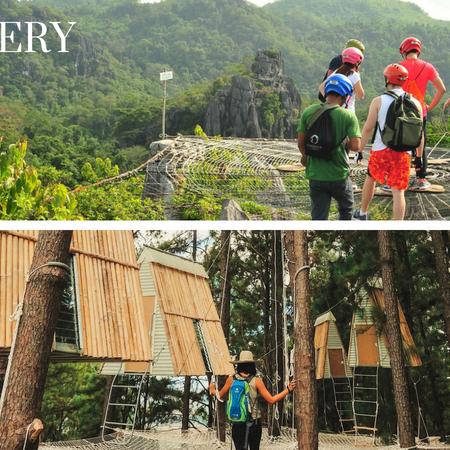
L'histoire de la restauration de nos forêts est déjà riche en couleurs. Elle est le fruit de 20 années de reboisement minutieux et désintéressé, au cours desquelles nous avons utilisé nos membres et nos ressources pour protéger notre petit coin de paradis contre l'exploitation de carrières, les bûcherons et d'autres intérêts destructeurs.
Cependant, les temps ont également changé. Malgré les progrès de la restauration, l'accessibilité accrue signifie aujourd'hui des menaces plus grandes et un intérêt plus grand pour les utilisations destructrices. Cela nous a fait prendre conscience que nos efforts devaient être plus durables financièrement et que le lieu devait être compris et apprécié par un public plus large que notre petit groupe d'intendants. La solution : permettre aux gens de pénétrer à l'intérieur.
Trois problèmes se sont posés à cet égard : (1) les montagnes des Philippines sont en train d'être détruites à cause du tourisme excessif ; (2) les activités d'aventure sont généralement préférées aux activités éducatives ; et (3) il existe de nombreux paysages karstiques esthétiquement similaires dans les environs.
Nous avons trouvé une solution à ces problèmes grâce à une utilisation créative et réfléchie de l'ingénierie dans la conception de notre expérience de sentier éducatif. Quelques exemples :
1. Les installations destinées aux visiteurs permettent à ces derniers de se préparer de manière adéquate avant de s'engager sur le sentier. Elles permettent de réduire l'impact humain pendant les 4 heures que dure le sentier et constituent une vitrine subtile des caractéristiques uniques de la région, telles que les bambous et les coquilles d'escargot abandonnées.
2. Les haltes emblématiques et uniques permettent aux randonneurs, même débutants, de se reposer tout au long de la randonnée. Ils suscitent également leur intérêt pour des éléments naturels qui étaient auparavant inaperçus ou inaccessibles.
Grâce à des pratiques d'ingénierie créative, nous sommes non seulement en mesure de mener des activités touristiques pour maintenir la zone dans les limites de sa capacité de charge, mais nous avons également pu créer une fierté d'appartenance, une meilleure compréhension du réseau de vie de la zone et fournir des sources directes de revenus à plus de 70 membres de la communauté dans un endroit reculé où les possibilités de subsistance sont limitées.
